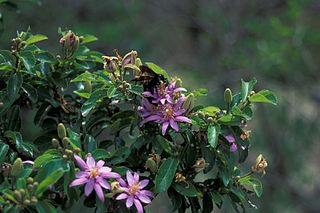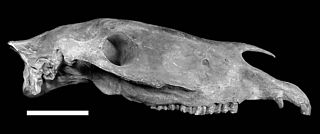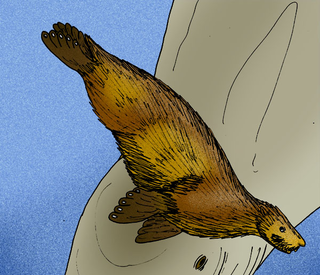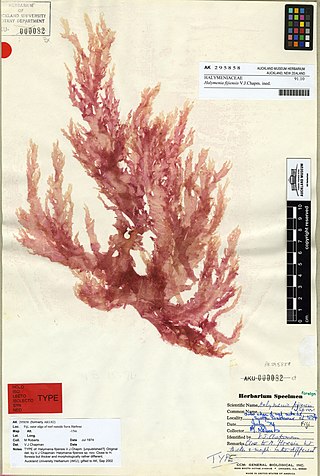
The earless seals, phocids, or true seals are one of the three main groups of mammals within the seal lineage, Pinnipedia. All true seals are members of the family Phocidae. They are sometimes called crawling seals to distinguish them from the fur seals and sea lions of the family Otariidae. Seals live in the oceans of both hemispheres and, with the exception of the more tropical monk seals, are mostly confined to polar, subpolar, and temperate climates. The Baikal seal is the only species of exclusively freshwater seal.

Placozoa is a phylum of the simple animals that are marine and free-living (non-parasitic). Placozoans are simply blob-like animals without any body part or organ, and are merely aggregates of cells. Moving in water by ciliary motion, eating food by engulfment, reproducing by fission or budding, they are described as "the simplest animals on Earth." Structural and molecular analyses have supported them as among the most basal animals, thus, constituting the most primitive metazoan phylum.

Neodiapsida is a clade, or major branch, of the reptilian family tree, typically defined as including all diapsids apart from some early primitive types known as the araeoscelidians. Modern reptiles and birds belong to the neodiapsid subclade Sauria.

Medusozoa is a clade in the phylum Cnidaria, and is often considered a subphylum. It includes the classes Hydrozoa, Scyphozoa, Staurozoa and Cubozoa, and possibly the parasitic Polypodiozoa. Medusozoans are distinguished by having a medusa stage in their often complex life cycle, a medusa typically being an umbrella-shaped body with stinging tentacles around the edge. With the exception of some Hydrozoa, all are called jellyfish in their free-swimming medusa phase.

Grewioideae is a subfamily of the family Malvaceae and was first described by Hochreutiner. The group is named after its type genus, Grewia, which is named for the English scientist Nehemiah Grew (1641-1712). It contains a number of genera that were previously placed in the defunct family Tiliaceae.

Euglenaceae is a family of flagellates in the phylum Euglenozoa. The family includes the most well-known euglenoid genus, Euglena.
Heintzichthys is an extinct monospecific genus of arthrodire placoderm that lived what is now Europe and North America during the Famennian stage of the Late Devonian period. The type specimen was discovered in the Cleveland Shale near Cleveland, Ohio, in the United States.

Haringtonhippus is an extinct genus of equine from the Pleistocene of North America The genus is monospecific, consisting of the species H. francisci, initially described in 1915 by Oliver Perry Hay as Equus francisci. Prior to the naming of the genus, it was sometimes referred to as the New World stilt-legged horse, in reference to its slender distal limb bones, in contrast with those of contemporary "stout legged" caballine true horses.

Planulozoa is a clade which includes the Placozoa, Cnidaria and the Bilateria. The designation Planulozoa may be considered a synonym to Parahoxozoa. Within Planulozoa, the Placozoa may be a sister of Cnidaria to the exclusion of Bilateria. The clade excludes basal animals such as the Ctenophora, and Porifera (sponges). Although this clade was sometimes used to specify a clade of Cnidaria and Bilateria to the exclusion of Placozoa, this is no longer favoured due to recent data indicating a sister group relationship between Cnidaria and Placozoa.

Equus neogeus is an extinct species of equine native to South America during the Pleistocene. It was formerly thought to be several distinct species within the subgenus Amerhippus, but was later shown to be a single morphologically variable species. It is thought to be closely related to true horses.

Gruimorphae is a clade of birds that contains the orders Charadriiformes and Gruiformes identified by molecular analysis. This grouping has had historical support, as various charadriiform families such as the families Pedionomidae and Turnicidae were classified as gruiforms. It may also have support from the fossil record since the discovery of Nahmavis from the Early Eocene of North America.

Pinnipedimorpha is a stem-clade of arctoid carnivorans that is defined to include the last common ancestor of Phoca and Enaliarctos, and all of their descendants of that ancestral taxon. Scientists still debate on which lineage of arctoid carnivorans are the closest relatives to the pinnipedimorphs, being more closely related to musteloids.

Hoilungia is genus that contains one of the simplest animals and belongs to the phylum Placozoa. Described in 2018, it has only one named species, H. hongkongensis, although there are possible other species. The animal superficially resembles another placozoan, Trichoplax adhaerens, but genetically distinct from it as mitochondrial DNA analysis revealed.

Halymeniales is an order of red algae belonging to the class Florideophyceae and the subclass Rhodymeniophycidae.

Cladtertia is a genus of placozoan discovered in 2022, whose only currently described species is Cladtertia collaboinventa. However, the genus is known to contain several other species, awaiting a formal description. Its closest described relative is Hoilungia hongkongensis, with whom it forms the order Hoilungea. After Trichoplax, Hoilungia and Polyplacotomia, it is the fourth described placozoan genus up to date.
Hoilungea is a recently created placozoan order comprising Cladtertia, Hoilungia, and other yet-undescribed species. Named in 2022, it is believed to be sister to Cladhexea, and corresponds to Clades III, IV, V and VII of the literature.
Cladhexea is a recently created placozoan order comprising yet-undescribed species. Named in 2022, it is believed to be sister to Hoilungea, and corresponds to Clade VI of the literature.
Polyplacotomia is a class of placozoans, to this date only comprising Polyplacotoma mediterranea. It was established in 2022. Their morphology is strikingly different from other placozoans in Uniplacotomia, exhibiting a highly ramified, branching structure with multiple amoeboid projections. It differs from Uniplacotomia by 76 uniquely present and 600 absent genes.
Hoilungidae is a recently created placozoan family comprising Hoilungia and other yet-undescribed species. Named in 2022, it is believed to be sister to Cladtertiidae, and corresponds to Clades IV, V and VII of the literature.














